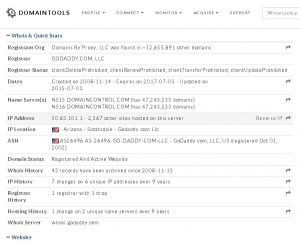Optimization = Integrated Web Presence
What is an Integrated Web Presence and why is it important? That’s a question we’ll attempt to answer in the next series of posts. But first, we’ll take a step back and look at how the answer came about.
Our approach to organic search has been evolving over the past three years. Without even realizing it, we’ve been involved in a natural selection process. As we slowly recognized that process, we realized we needed to label its outcome in order to effectively market it.
We now call that outcome the Integrated Web Presence. Here’s a simple overview of that evolution.
In the past, web designers built nice looking web sites. In the early 90’s that was good enough. Today, people want a web site that’s search engine friendly. A decade ago that was pretty easy – these days, not so much. As more and more businesses sought top positions for the most lucrative search queries, more and more web designers learned about organic search optimization.
As this process evolved, web designers executed more tasks at a higher level to gain search position. Some of them became Search Engine Strategists.
We’ve always focused on organic search at mywebmarket.com, but the integrated web presence takes SEO to a whole new level.
Search Friendly Design
First and foremost, we execute a search friendly design structure on a responsive server.
Design that takes advantage of product and service categorization is critical. One of our favorite developers produces page and post widgets that allow us to drag and drop snippets of optimized pages onto their category page. We found that search engines love this almost as much as we do.
For example, Company X offers 5 services and 6 products. We’ll build a well optimized page for each service and each product. Then we’ll build a broader Product category page which delineates each of the 6 products. Next, we build a Service category page which delineates each of the 5 services. This is the type of design structure that optimizes your site for organic search. Naturally, this lays the foundation for paid search as well.
Specific is Terrific
The biggest mistake we see in poorly optimized websites is the tendency to lump too many items on a single page. This breaks the cardinal rule of “singularity“. Sure, it saves time and costs less, but how can you expect your expert transmission repair service to be found if it’s on a page with your brake service, your tune up service, your engine rebuild service and your oil change service? Now, if people typed “brake, tune-up, engine rebuild and oil change service” into Google, there’s a chance that page might show up. But people don’t search like that. They search for specific things, one at a time.
Not to belabor the issue, but it’s so important (and so often overlooked) it bears repeating. Search engine algorithms are logical, and they respond favorably to categorization and specifics. So when your content is properly categorized from broad to specific, it’s easy to find. That structure gives you the added bonus of acceptable repetition.
Gone are the “old days” of SEO tactics defined by keywords repeated over and over in multiple blog posts, pages, paragraphs and footers. That form of repetition earns an immediate DOWN-RANK by today’s advanced search engine algorithms. But a broad category page (of products or services for example) leading to more specific detail pages gives you the kind of repetition search engines love.
The immense popularity of the WordPress platform owes much of its early success to the structure of its search friendly blogging format utilizing categorized posts. We leverage that same functionality in our page development.
Server Response Time

Let’s get responsive. And we’re not talking just mobile responsive, we’re talking about server response time. Having a slow site is the kiss of death on any device: mobile, tablet or desktop. So make sure your hosting company is “up to speed” like mywebmarket.com.
While certain “big box” hosting companies (and site builder platforms) boast that they can host thousands of responsive sites on a single server, our speed tests using the link above tend to prove otherwise. You can go to domaintools.com and enter your domain to see how many other sites are hosted on the same server as yours.
When your site is hosted along with 2367 other sites, is it any wonder you fail the Google speed test for mobile and desktop? When “server response time” is the only big red X in your “fix it” report, you need a new host. The client’s site referenced in the image above failed pretty spectacularly. Their new site will be hosted with us.
So … as another 15 hour work day draws to a close at mywebmarket.com, it’s time to finish this post and hit the sack. In Part II we’ll cover the second most important series of tasks to “execute well” in the pursuit of a fully integrated web presence – one that outranks the competition with many little things done well … and fully integrated.